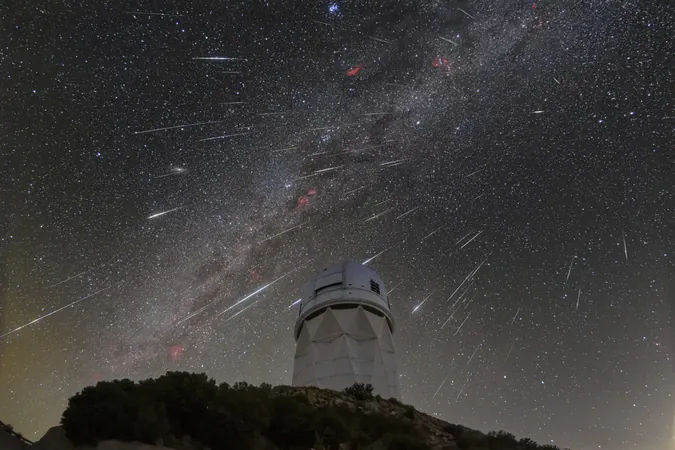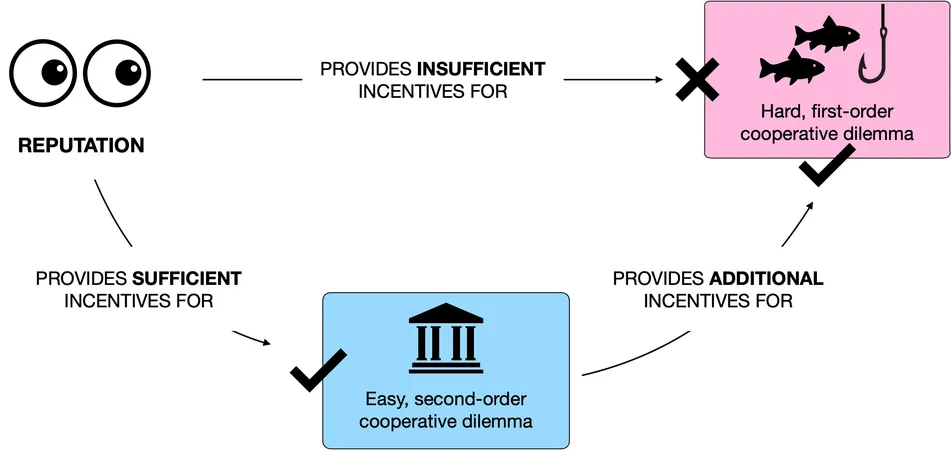
Shocking Discovery: When Humans and Neanderthals Interbred—New Insights Revealed!
2024-12-16
Author: Emily
Introduction
Long ago, the Earth was a diverse habitat, home to various archaic human species, including Neanderthals and Denisovans. These early bipedal beings were closely related to the modern humans we know today, Homo sapiens, who originated in the Horn of Africa. As Homo sapiens began their migration out of Africa, they encountered these ancient relatives, leading to unprecedented interactions.
Interbreeding Evidence
For decades, archaeologists suspected that interbreeding between humans and Neanderthals occurred. This theory gained substantial traction after the publication of the first draft genome of Neanderthals in 2010, revealing that about 1-3% of the human genome is derived from Neanderthal ancestry. However, the timeline of this interbreeding remained ambiguous—until now. Recent studies, employing ancient DNA sequencing from a 45,000-year-old skull known as Zlatý kůň unearthed in the Czech Republic, have pinpointed the interbreeding occurrence to around 47,000 years ago. This interbreeding group signifies a pivotal genetic bottleneck for our species as they were the only group of humans who survived after migrating from Africa during that era.
Recent Research Findings
The research, published in leading scientific journals *Nature* and *Science*, reveals that non-African populations, which largely comprise individuals without exclusively Central-African ancestry, inherited Neanderthal gene variants from this specific interbreeding event. Two independent studies corroborate these findings yet utilize different methodologies, providing a comprehensive understanding of our genetic past.
Contributions of Key Scientists
Dr. Johannes Krause, a paleogeneticist at the Max Planck Institute for Evolutionary Anthropology (MPI-EVA), spearheaded the *Nature* paper, successfully sequencing genomes from the Zlatý kůň skull and human bone fragments from Ranis, Germany. Remarkably, these genomes represent the oldest nuclear human genomes identified to date. Their analysis unveiled critical insights into the genetic heritage of European populations at that time.
Arev Sümer, the lead author of the *Nature* study and a PhD student in Krause’s lab, discovered that the genomes from Zlatý kůň and Ranis share Neanderthal ancestry similar to modern-day non-Africans, indicating that all modern humans outside of Africa emerged from a small population interacting with Neanderthals between 43,000 and 50,000 years ago. “This is crucial as it clarifies that ancient human remains older than 50,000 years outside Africa do not belong to direct ancestors of contemporary humans,” Sümer stated.
Insights from Other Experts
Adding a fresh perspective, Omer Gokcumen, an anthropological genomicist at the University at Buffalo who wasn’t involved in the study, noted the scarcity of ancient genomic data prior to this finding. “These genomes represent individuals less than 100 generations removed from the earliest migrants into Europe,” Gokcumen explained, emphasizing the significance of this discovery.
Confirmation of Ancestors
Meanwhile, the *Science* paper confirmed that the ancestors of all modern non-African humans descended from the population interbreeding in Europe roughly 47,000 years ago. Utilizing previously sequenced genomes, the research explored how Neanderthal ancestry evolved within present-day populations. It notably highlighted that dramatic selection occurred shortly after gene flow, within approximately 100 generations following interbreeding.
Neanderthal Gene Variants
Dr. Leonardo Iasi, the lead author of the *Science* study, explained that some Neanderthal gene variants benefitted humans—particularly those related to the immune system and skin pigmentation—while others proved disadvantageous and were rapidly purged from the gene pool. Intriguingly, the human X chromosome exhibits a complete absence of Neanderthal gene variants, indicating rapid selection against these genes.
Conclusion and Future Directions
Despite the momentum of these groundbreaking findings, many questions remain unanswered. Points of exploration include understanding how later interbreeding with other archaic human species influenced the variation in Neanderthal gene content across populations and elucidating why some Neanderthal variants confer benefits while others are detrimental.
Stay tuned as scientists continue to unravel the intricacies of our ancient past. You won’t believe what else they may uncover about our mysterious origins!









 Brasil (PT)
Brasil (PT)
 Canada (EN)
Canada (EN)
 Chile (ES)
Chile (ES)
 España (ES)
España (ES)
 France (FR)
France (FR)
 Hong Kong (EN)
Hong Kong (EN)
 Italia (IT)
Italia (IT)
 日本 (JA)
日本 (JA)
 Magyarország (HU)
Magyarország (HU)
 Norge (NO)
Norge (NO)
 Polska (PL)
Polska (PL)
 Schweiz (DE)
Schweiz (DE)
 Singapore (EN)
Singapore (EN)
 Sverige (SV)
Sverige (SV)
 Suomi (FI)
Suomi (FI)
 Türkiye (TR)
Türkiye (TR)